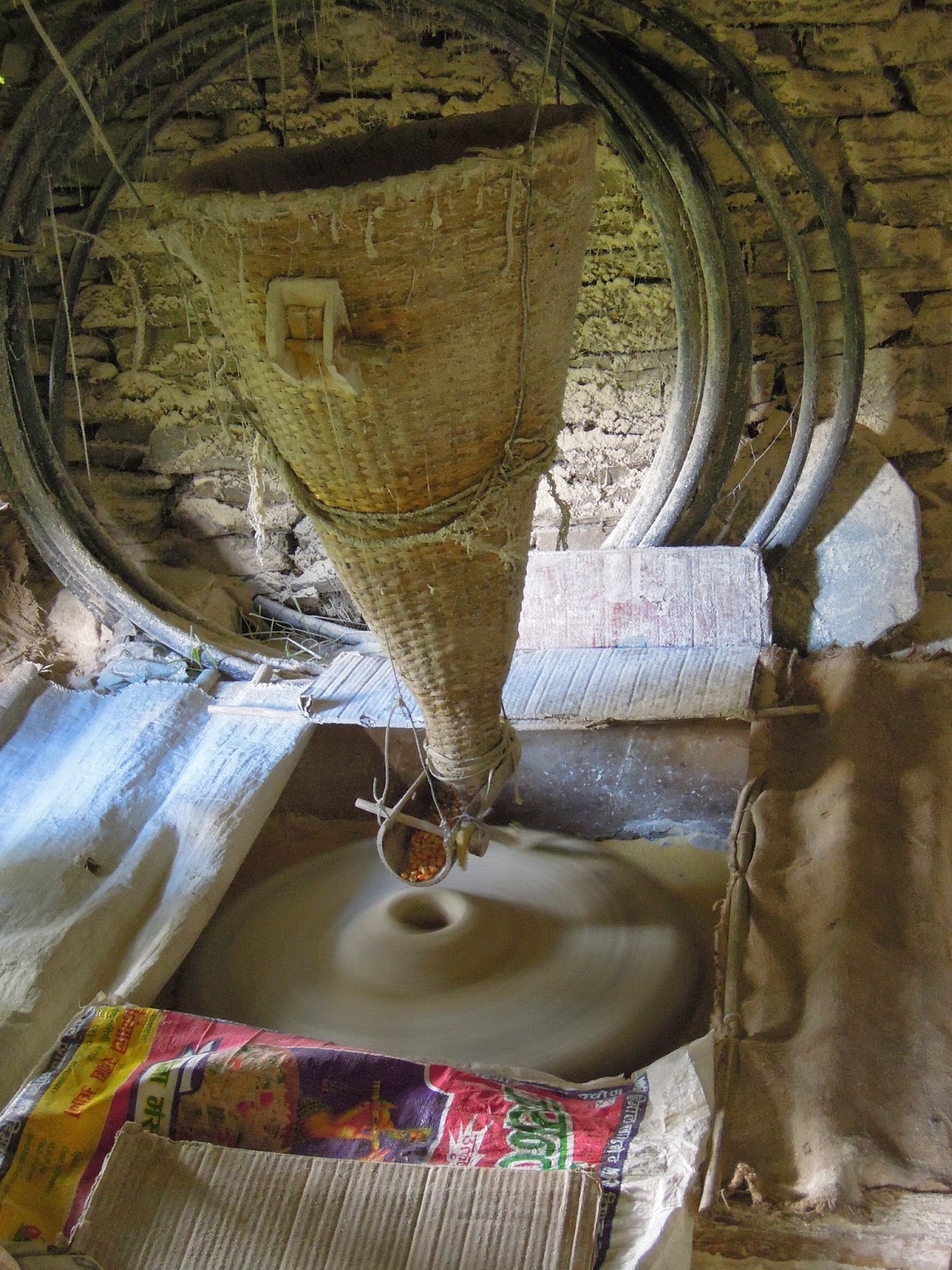Ghandruk latitude and elevation are the best ingredients for fragile ecosystems but nonetheless a rich biodiversity. As the species migrate in an out of the region, farmers rotate their crops up and down the terraces changing both the color and texture of the hills throughout seasons.
 |
| Endless terraces... |
Rice is planted towards the end of the monsoon season (August-September) and was harvested during my stay. They have 2-3 harvests per year.
.JPG) |
| Separating the rice from the stem |
Millet and corn follow rice harvest depending on elevation and slope aspect. Soya is also fund on the edge of the millet fields where exposed to the sun.
 |
| Red kidney beans |
Throughout the dryer season (October to December) corn can be seen hanging and drying under almost every single house roof.
 |
| Corn drying under the house roof |
Early December is time to plant different varieties of potatoes to be harvest after the winter. Buckwheat also grows in the region but at higher altitudes between 3000 and 4000 m.
Accompanying rice and potatoes dishes, rotis (various bread types), noodles and momos are commonly found in Nepali cuisine's. Water being abundant and accessible, water mills provide the communities with rice, wheat, corn and buckwheat flour according to seasonal availability.
 | ||
| Water Mill |
Humm, delicious makai (corn) and
phapar roti (buckwheat bread)!
phapar roti (buckwheat bread)!
.JPG)
.JPG)
.JPG)


This comment has been removed by the author.
ReplyDelete